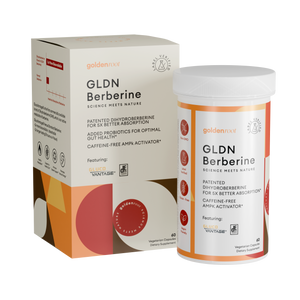GLP‑1 receptor agonists are a transformative class of medications originally developed for type 2 diabetes but now broadly prescribed for weight management and emerging metabolic applications. These drugs mimic a natural gut hormone to stimulate insulin release, curb appetite, and slow gastric emptying, leading to enhanced blood sugar control and significant weight loss. Beyond glucose regulation, GLP‑1s offer cardiovascular and renal protection, with ongoing research into neuro-protective and liver‑health benefits. Common side effects tend to be gastrointestinal and self‑limiting, though rare risks such as pancreatitis, gallbladder disease, and thyroid concerns warrant attention. Careful patient selection, dose titration, and supportive nutrition exercise strategies help maximize benefits while minimizing downsides.
Related products:
- natural supplements for anxiety and sleep
- creatine and HMB for aging muscle
- berberine for weight loss and metabolism
What Are GLP-1 Drugs?
Glucagon‑like peptide‑1 (GLP‑1) receptor agonists are injectable, or in some cases oral, medications that replicate the action of GLP‑1, a hormone secreted by intestinal cells in response to food. This incretin enhances insulin secretion, suppresses glucagon release, slows gastric emptying, and signals satiety to the brain. Originally approved for type 2 diabetes, several agents now carry FDA indications for obesity at higher doses, broadening their therapeutic scope.
Read more: Why Berberine Is the Ideal Supplement Post-GLP-1 Weight Loss Treatment
GLP-1 Explained Simply
GLP‑1 Hormone
Released after meals; stimulates insulin, suppresses glucagon, delays gastric emptying, and promotes satiety.
Receptor Agonists
Synthetic compounds that bind GLP‑1 receptors, reproducing all these effects with longer action.
Common Agents and Formats
Daily injections: Liraglutide (Victoza for diabetes; Saxenda for weight loss), lixisenatide (Adlyxin)
Weekly injections: Dulaglutide (Trulicity), semaglutide (Ozempic for diabetes; Wegovy for weight loss), tirzepatide (Mounjaro/Zepbound, a dual GLP‑1/GIP agonist)
Oral tablets: Semaglutide (Rybelsus)
Read more: Who Should Think Twice Before Taking GLP-1 Drugs for Weight Loss?
How GLP‑1 Medications Work in the Body?
GLP‑1 agonists engage multiple pathways to improve metabolic health:
Glucose‑Dependent Insulin Release
They boost insulin secretion only when glucose is high, curbing hyperglycemia and hypoglycemia.
Gastric Emptying Delay
Food stays longer in the stomach, flattening blood sugar spikes and prolonging fullness.
Appetite Suppression
These drugs interact with brain centers that regulate hunger, reducing overall calorie intake.
Benefits of GLP-1 Drugs
GLP‑1 agonists extend far beyond glucose lowering; they deliver a suite of metabolic, cardiovascular, and even neurocognitive advantages.
1. Improved Glycemic Control
Patients taking GLP‑1s often see A1C reductions of 1-1.5%, comparable to other second‑line diabetes therapies, with minimal hypoglycemia when used alone.
2. Significant Weight Loss
Clinical trials demonstrate average body‑weight reductions of 10-15% over 12-68 weeks, with semaglutide and tirzepatide outperforming earlier agents. Such weight loss improves insulin sensitivity and may reduce long‑term medication burden.
3. Cardiovascular and Renal Protection
Large outcome trials in high‑risk type 2 diabetes populations reveal that GLP‑1s reduce major adverse cardiovascular events (MACE) by up to 15% and slow the progression of diabetic nephropathy.
Read more: What Effect Do GLP-1 Drugs Have on Bone Health and Muscle?
4. Emerging Uses
Neuroprotection: Early studies suggest GLP‑1s may slow cognitive decline and have potential in Alzheimer’s disease.
Liver health: Reductions in liver fat and inflammation have been observed in nonalcoholic steatohepatitis (NASH) trials.
Obstructive sleep apnea: Tirzepatide (Zepbound) earned FDA approval for moderate‑to‑severe OSA in adults with obesity in late 2024.
GLP‑1 and Weight Loss: What the Science Says
GLP‑1 agonists earned FDA approval for obesity after trials showed dramatic weight reductions:
Semaglutide (Wegovy): ~15% body‑weight loss over 68 weeks in adults with obesity.
Tirzepatide (Zepbound): Up to 21% reduction at highest dose in the SURMOUNT‑1 trial.
Can You Lose Weight Without Dieting on GLP‑1?
While GLP‑1s curb appetite, the best results combine medication with balanced nutrition and activity. Even modest dietary adjustments amplify drug effects, preventing plateaus.
A Full List of GLP‑1 Drugs (2025 Edition)
Daily Injections: Liraglutide (Victoza/Saxenda), lixisenatide (Adlyxin)
Weekly Injections: Dulaglutide (Trulicity), semaglutide (Ozempic/Wegovy), tirzepatide (Mounjaro/Zepbound)
Oral Pills: Semaglutide (Rybelsus)
Read more: Unlocking the Benefits of Creatine for Weight Loss
Comparing Top GLP‑1 Medications
|
Drug |
Dosing |
Weight Loss |
Key Benefit |
|
Semaglutide |
Weekly |
10-15% |
Strong CV and metabolic data |
|
Tirzepatide |
Weekly |
15-21% |
Dual GLP‑1/GIP action |
|
Liraglutide |
Daily |
~8% |
Well‑studied long term |
|
Dulaglutide |
Weekly |
~6% |
Fewer GI side effects |
Read more: is creatine safe while breastfeeding
GLP-1 Side Effects and Safety Considerations
Most users experience mild, transient GI symptoms; serious events are uncommon but warrant vigilance.
Common vs. Rare Side Effects of GLP‑1 Agonists
Common (20-40%):
Nausea, vomiting, diarrhea, constipation; often abate after 2-4 weeks.
Rare:
Pancreatitis: Monitor for persistent upper‑abdominal pain.
Gallbladder disease: Rapid weight loss itself increases gallstone risk.
Thyroid C‑cell concerns: Observed in rodents; human relevance remains unclear.
Diabetic retinopathy progression: Seen with semaglutide; slower dosing mitigates risk.
Management Tips
Smaller meals, hydration, ginger or cracker snacks, and slow uptitration help patients adapt.
Injection-Site Reactions
Mild redness or itching may occur; rotating injection sites minimizes local irritation.
Read more: Why Berberine Is the Ideal Supplement Post-GLP-1 Weight Loss Treatment
How GLP‑1 Affects Appetite, Insulin, and Digestion
GLP‑1’s multifaceted influence drives its potent effects:
Brain: Activates satiety centers, cutting cravings.
Pancreas: Amplifies insulin with high glucose, restrains glucagon.
Stomach: Slows emptying, reducing meal frequency.
The Hormonal Role of GLP‑1 in the Body
GLP‑1 fine‑tunes post‑meal metabolism: it bridges the gut, pancreas, liver, and brain to maintain energy balance.
LPG‑1 vs Insulin: What's the Difference?
Insulin: Directly lowers blood sugar, but risks hypoglycemia and weight gain.
GLP‑1s: Enhance insulin release only when needed, plus support weight loss.
When Is GLP‑1 Preferred Over Insulin for Diabetes?
GLP‑1s are first‑line add‑ons when metformin alone falls short, particularly in overweight/obese patients with high CV risk.
GLP-1 Drugs in Type 2 Diabetes Treatment
GLP‑1 agonists reduce A1C by ~1-1.5%, often without hypoglycemia when used solo. They also lower blood pressure and improve lipid profiles.
Managing Blood Sugar with GLP‑1
Combined with lifestyle change, GLP‑1s help many patients reach target A1C (< 7%) within 3-6 months.
The Science Behind GLP‑1 (Mechanism of Action)
GLP‑1 receptor binding triggers cAMP pathways in β‑cells, boosting insulin gene expression and exocytosis. Concurrently, PKA activation in gastric smooth muscle retards peristalsis.
How GLP‑1 Influences Your Body Systems
Pancreatic β‑cells: ↑ insulin release
Pancreatic α‑cells: ↓ glucagon
CNS: ↑ satiety
Digestive tract: ↓ motility
Patient Selection: Who Stands to Gain Most?
GLP‑1 therapy isn’t a one‑size‑fits‑all solution. Ideal candidates include:
Adults with type 2 diabetes inadequately controlled on metformin or sulfonylureas .
Individuals with obesity (BMI ≥ 30 kg/m²) or overweight (BMI ≥ 27 kg/m²) with comorbidities such as hypertension or dyslipidemia .
High cardiovascular risk patients seeking MACE reduction.
Contraindications: Personal/family antecedents of medullary thyroid carcinoma, multiple endocrine neoplasia type 2, pregnancy, or severe gastrointestinal motility disorders.
Read more: Can GLP-1 Drugs Be Taken Orally? Unpacking the Options for Diabetes and Weight Management
Addressing Muscle and Nutrient Concerns
Rapid weight loss may inadvertently reduce lean mass and deplete micronutrients. Strategies to counteract this include:
Protein intake: Aim for 1.2-1.5 g/kg/day to stimulate muscle protein synthesis.
Supplement support: Creatine and HMB supplementation can preserve muscle during caloric deficits.
Micronutrients: Monitor and supplement vitamins B12, D3+K2, magnesium, and electrolytes to prevent deficiencies common on restrictive diets.
Conclusion
GLP‑1 receptor agonists have redefined metabolic care. As these drugs continue to evolve, and new dual/triple agonists emerge, they stand poised to shape the future of chronic‑disease management for millions.



